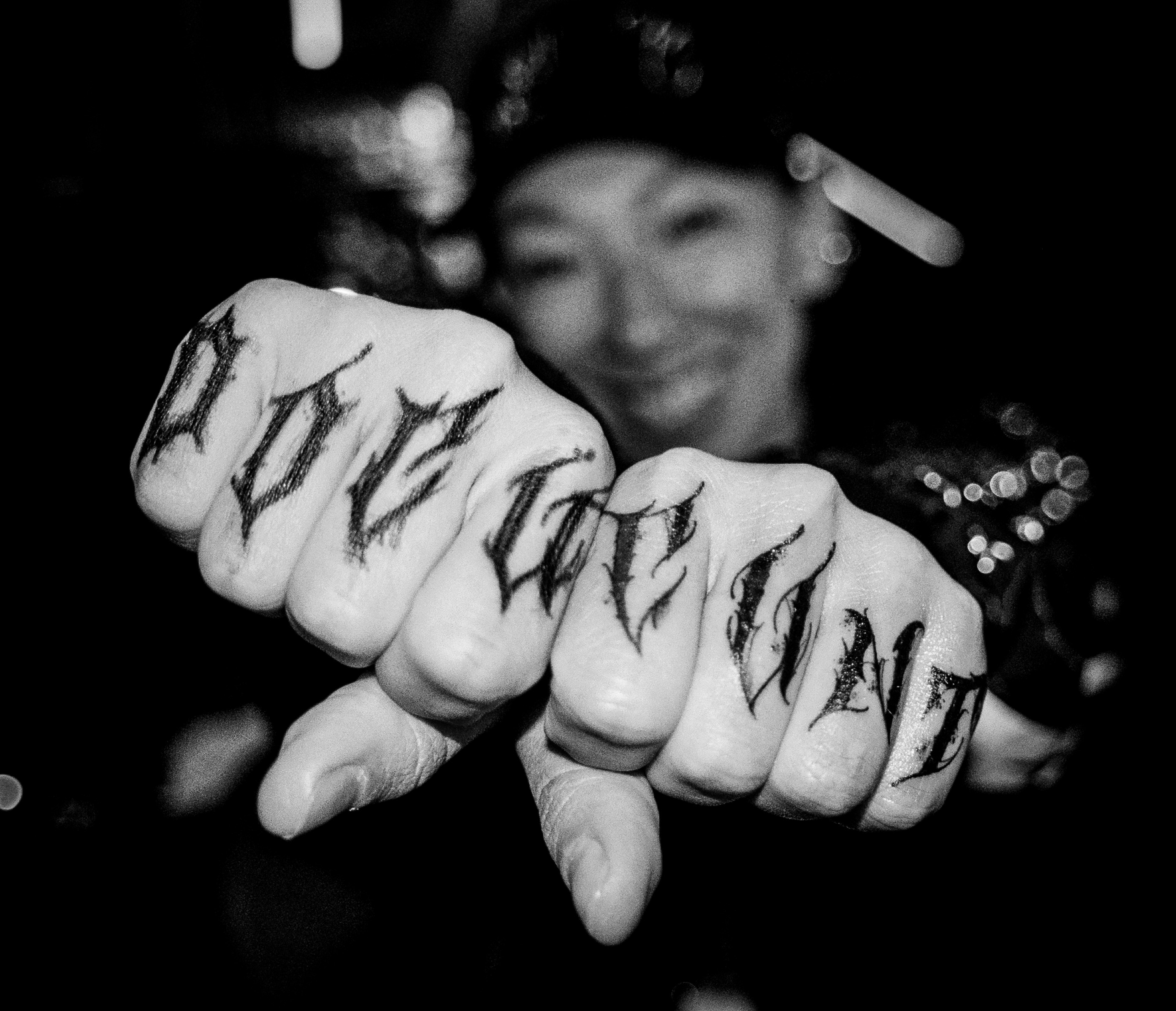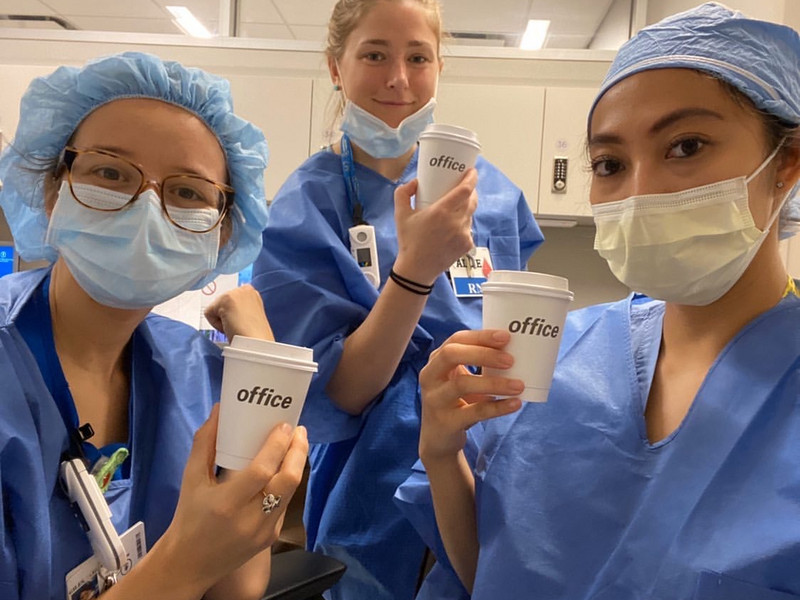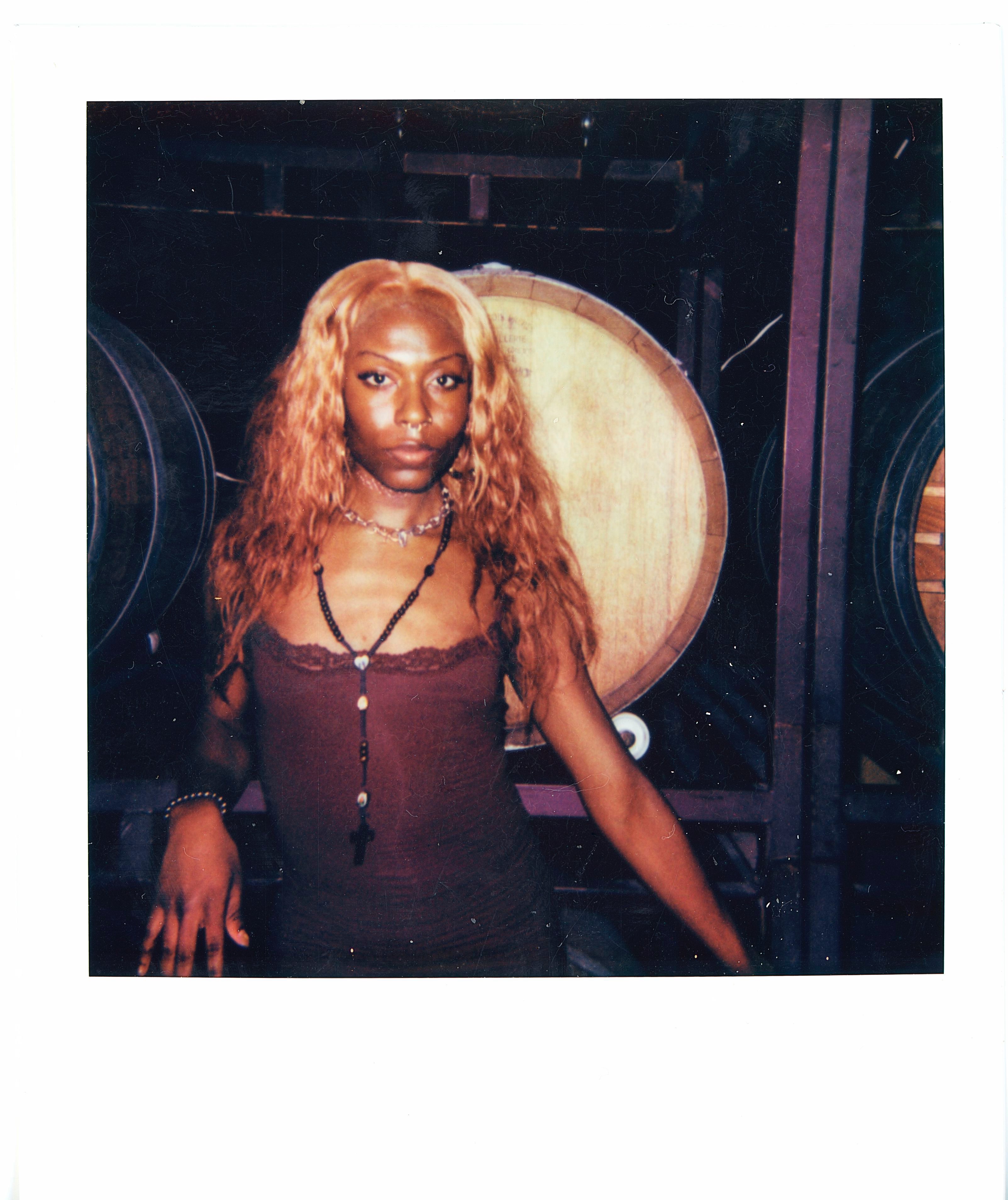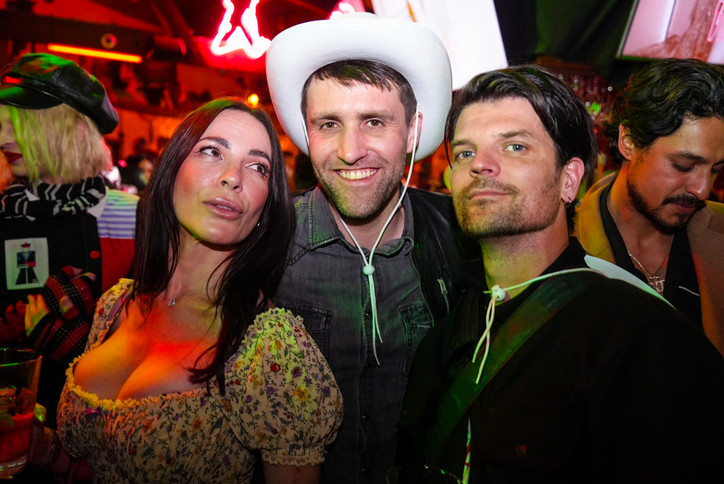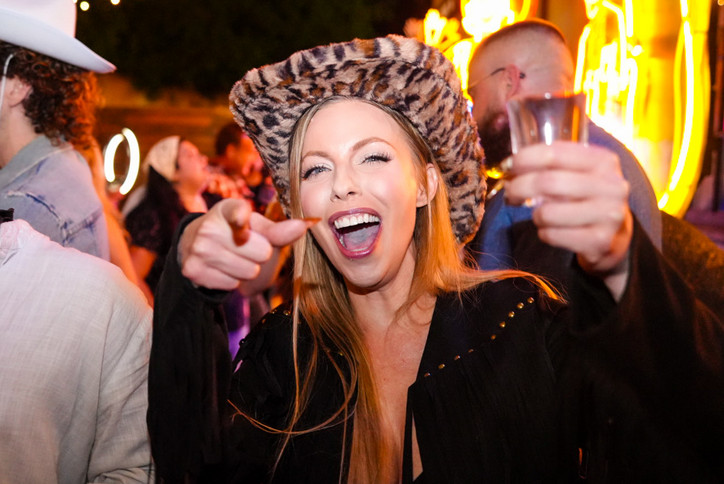The Cost of Queendom

The ritual may be familiar, but nothing else about the scene — from its setting to its stakes — is ordinary. The backdrop behind Jenna is a sweeping expanse of ice and snow in a small Russian port town called Magadan. Jenna is dressed in drag, but not drag of the Rupaul’s Drag Race variety; her drag has been referred to as “creature drag.” Her signature white face paint, platform heels and surrealist costumes, with their exaggerated sculptural proportions and use of duct tape and repurposed items, catches the ire of her neighbors and the love of online admirers alike. Jenna eventually accrued a following on social media for her public and technically illegal drag performances, which often involved little more than her walking or being in public spaces but nevertheless were often met with abuse and threats of imprisonment.
But when Agniia first encountered Jenna, she hadn’t yet reached the level of virality that would eventually come in the years to follow. The filmmaker was researching different drag performers in Russia for her sophomore project, which she thought would be a docuseries, when she heard from a friend about a young drag queen from Magadan. “I was like, this is impossible. I have to meet this person,” Agniia remembers. “And I could not actually go meet her because I was in Moscow and she was in Saint Petersburg, so I sent a friend of mine with whom I’d been studying with in film school, and she went and filmed the sample.” The simple video, showing Jenna and her friend getting dressed up for a party, struck something in Agniia. The drag was an earlier, more prototypical version of the style Jenna is now known for; less duct tape and ornamentation, but still that signature striking makeup. “Something sparked. I knew I just had to stick to this feeling,” Agniia says. She decided to turn the docuseries into a documentary solely focused on Jenna.
Around that time, the entire world came to a grinding halt: the onset of COVID-19 pandemic had just led to lockdowns around the globe. With only a couple thousand followers on social media at that point in time, Jenna had tried to branch out and connect with other drag artists in Moscow and Saint Petersburg, but faced rejection; her drag was extremely unconventional, and not even other drag artists quite understood it. “I think we found each other at the right moment, because nobody knew what to do, how to cope with all this,” Agniia says. “Jenna was saying that she was lost, and she also didn't know how to develop her art next.”
Unlike some of the other artists Agniia had initially researched, Jenna didn’t need much convincing to allow the camera into her life. “[Especially] after COVID came, there wasn't really [any] drag in my life,” Jenna recounts when I speak to her later over Zoom. “I realized that what drag is for me is not just a costume, a dress, something that you leave, that you take off and then in the dead of the night you put back on. Later, I understood that this is who I am, that I am art and I am drag, and that this is way bigger and more important than just clothing or costume.”


[LEFT TO RIGHT: Agniia Galdanova, Jenna Marvin, Igor Myakotin]
When it came time to move into production stages, Agniia sent a clip to Igor, who had been referred to her by a past colleague. When Igor saw the footage, he was similarly struck by Jenna — and even more struck to find out she shared his small hometown of Magadan. “It was just so fateful to know that I also come from this town, and I've never seen it through this cinematic lens, through the vision that Agniia has,” he says. “I was mesmerized by the footage, mesmerized by Jenna. I thought to myself, I have to do everything I can [for us] to work together, whatever the collaboration is gonna be.”
The two followed Jenna for over three years; Agniia first relocated to St. Petersburg, where Jenna had taken up residence after leaving her grandparents’ home in Magadan, and later Jenna moved in with Agniia in her home in Moscow. All the while, Igor and his team worked remotely from the United States to meet Agniia’s production needs. Inevitably, with all their time spent together, Agniia and Jenna became close.
“There is an unspoken rule in documentary filmmaking that you have to keep this line, and you can’t overcome certain boundaries,” Agniia explains. “In my first film, it was not an easy subject [to do this with] as well. I was following a family for seven months, and [we became] close, but I always was trying to keep my distance, and was constantly thinking about it. How much should I say? How much should I give?” But as she got to know Jenna, it became clear that this time, that distance wouldn’t be possible. “With Jenna almost from the very beginning, I was like, fuck it. That’s not going to work with this one. I'm going to break this rule 100%. I never regretted it, because that's actually what built up the trust that is there.”
As Jenna's public performances continued and began to garner more public attention, her online audience multiplied. Among her virtual admirers was French fashion maven Michèle Lamy, who would eventually sign onto Queendom as an executive producer. Lamy's discovery of Jenna led to an invitation to walk in the Rick Owens show in Paris — her first time modeling, and her first time leaving Russia in her life. Of course, Agniia and her camera followed. But most of their excursions were not so glamorous; many of Jenna's performances shown in the documentary were undertaken at a real risk to her physical safety, and by extension, to the safety of Agniia. But neither of them were daunted.
After all, Jenna was used to both taking risks and documenting them well before she was the subject of a film; she and her friends long filmed the often impassioned, sometimes violent reactions of strangers and policemen to their mere existence in public spaces in drag. And after a protest performance in which she wrapped herself in the Russian flag, Jenna was kicked out of beauty school, her last attempt at a practical route before pursuing her drag as a full time venture.
The only time Agniia tried to dissuade her was on Paratrooper’s Day, a Russian military holiday often characterized by the drunk soldiers roaming the streets. The risk for violence was especially high. “On Paratroopers Day, people say you can't come out in skinny jeans or with nail polish,” Jenna describes. “[I think] you should do the opposite. You should really make a statement and come out wearing what you want to wear. I think that clothes, what we wear, is really at some point beyond our psyche, our mind, our understanding. It is as if it's a certain kind of spice that is enticing you and you follow the scent of that spice and you don't see anything else except that scent and you follow it. That's how I see it.”
“I was like, ‘girl, maybe we should not do that,’” Agniia says. “Igor was stressing out and she told us, ‘well, you don't need to follow me. I'm gonna go and do it. I don't care if you're coming or not.’” In the end, Jenna ventured out for her performance anyway, protesting the then-recent invasion of Ukraine. Agniia followed. Not shown in the film is that the two were arrested, and managed to talk the police out of their arrest.
Not too long after, she would have to leave Russia again, this time moving for Paris for good; the film follows her struggles to get a visa in time to leave the country after the onset of the war. “It's already been three years that I've been in France, and it is important for me to understand and remember who I am, and to remember that pain, those moments when we were back in Russia doing drag, fighting with the police and law enforcement,” Jenna says. “It is important that this resistance continues and that those voices are not being silenced. Yes, here there’s much more freedom, there are pride parades and queer people can get married, but this is an illusion because there are also places where you cannot get married and you cannot enjoy the same freedoms. I cling to who I am, who I was from the very beginning. I remember who I am. And this is what carries me through this life.”
“Meeting Jenna gave me hope for the future of the country, because governments come and go, people in power come and go, but the generations change at the same time,” Igor says. “So it warms my heart to see that someone like her came from somewhere like that. If I saw her back then at a similar age, it would be even more personal. I think I would’ve accepted myself as gay quicker, and I wouldn't be nervous or closed and not open to the world or myself… Working with this project also meant that we were amplifying the voices of many, many people who couldn't speak like Jenna could.”
For Agniia, the honor of telling Jenna's story is only paralleled by the honor of having her in her life. “We found each other,” Agniia says. “And what I learned from Jenna is so precious; about life, about art, about surviving. And I appreciate it a lot. This film grew so much larger than just a documentary, because I have a family now, a working family.”


